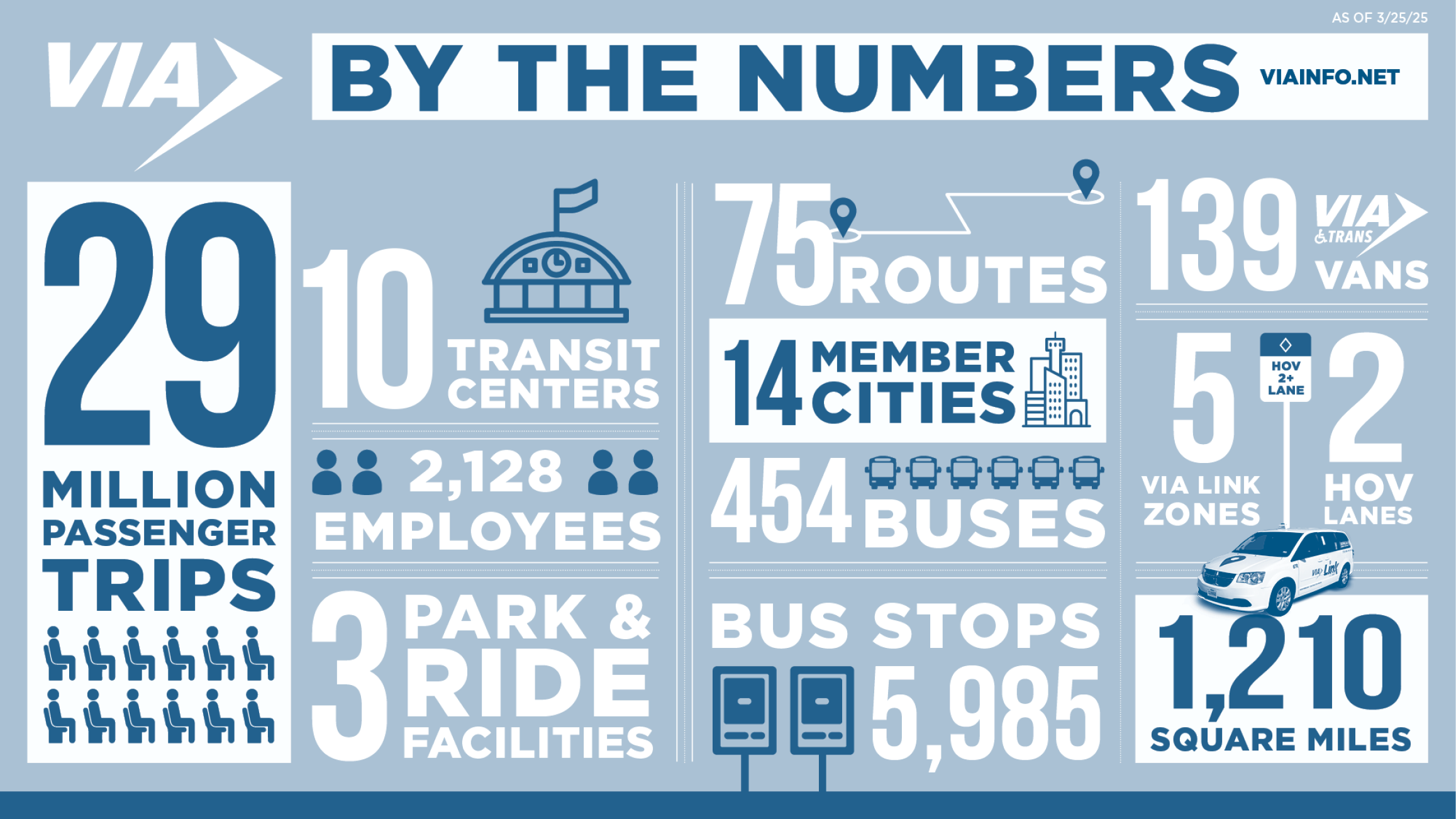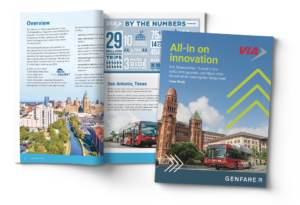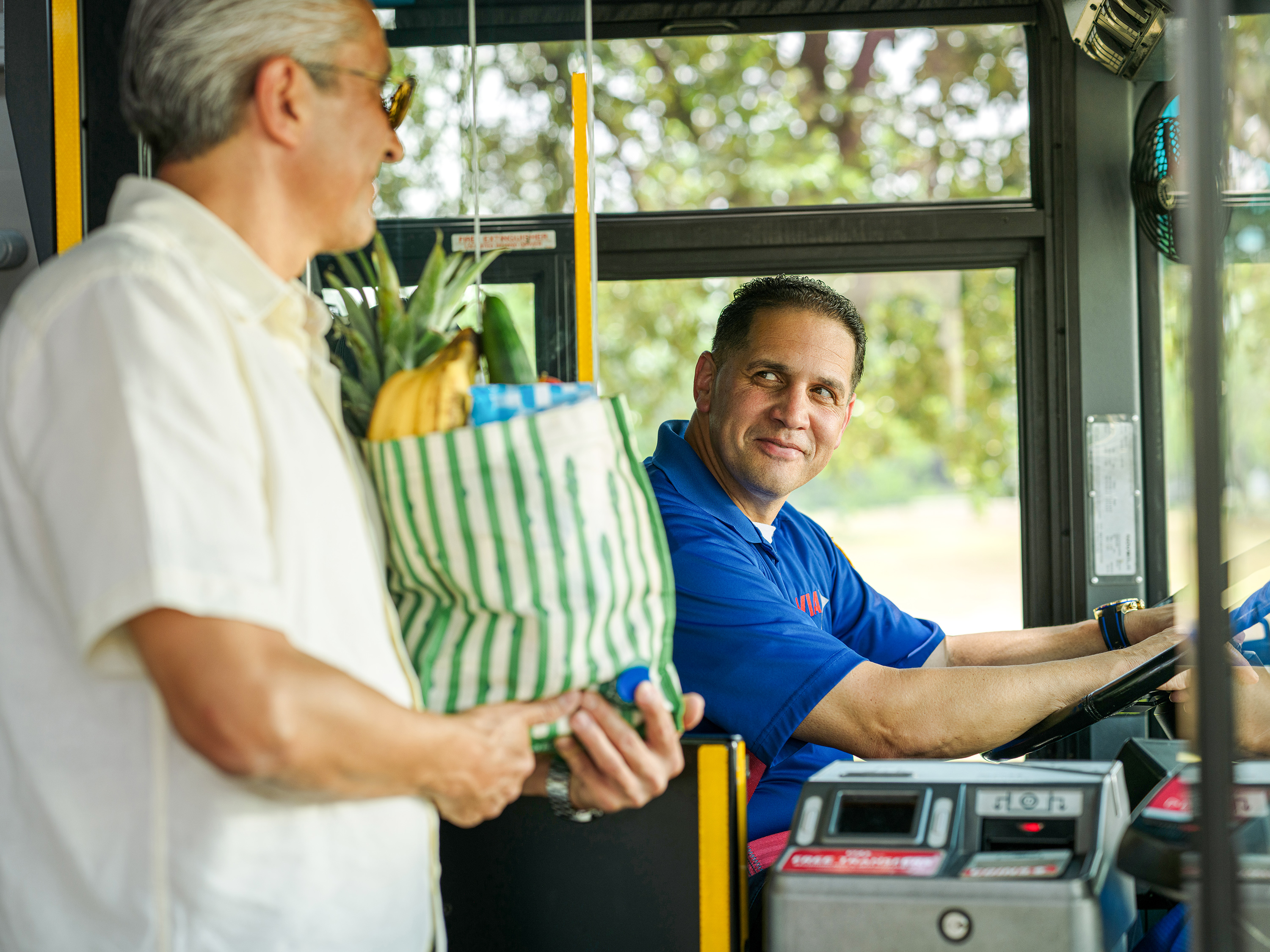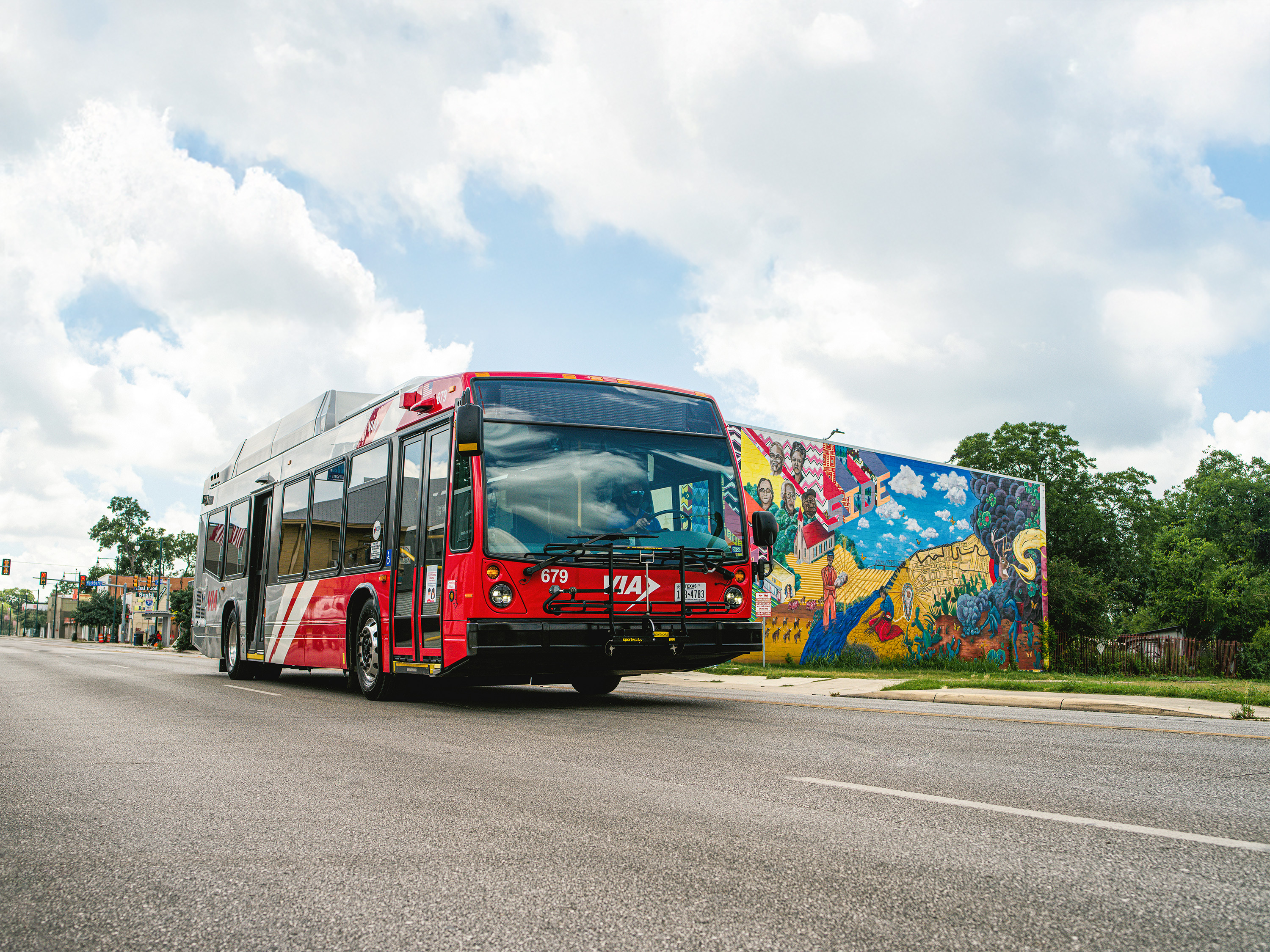
Overview
San Antonio is a vibrant, sprawling city in Texas, where growth was influenced by post-WWII highway expansion. The region has seen steady population increases for decades, and large-scale special events and popular historic sites attract millions of annual visitors.
The region’s public transportation provider, VIA Metropolitan Transit, has gone all-in on innovation to reduce maintenance tasks, boost bus frequency, and modernize the transit experience while attracting new riders and supporting its community.
In 2024, VIA was named “Outstanding Metropolitan Transit Authority in Texas” by the Texas Transit Association, recognizing the agency’s work to enhance access and help drive economic development. As part of a voter-approved plan, VIA has invested in enhanced services and goals, including:
- VIA Link on-demand microtransit service
- Smart technologies such as real-time bus tracking
- Its “Better Bus Plan” to cut wait times across the system to 30 minutes or less on traditional bus routes, expand on-demand microtransit service, and increase rider access
- Advanced Rapid Transit, projected to launch in 2027 and 2029
- Sustainability initiatives including low- and no- emission natural gas and electric bus fleet expansion
To support these future-forward plans, VIA chose to upgrade its aging fareboxes. It wanted to move away from magnetic fare cards, add tap-and-go features to support credit and debit card acceptance, and further streamline operations.

Solution
VIA chose a customizable fare collection solution that checked these boxes in partnership with a proven vendor, ensuring hands-on support for the smoothest transition possible. Genfare’s latest fareboxes, backend software, and its collaborative capabilities fit the bill. The first phase of the project, which is now complete, included four elements.
Fast Fare fareboxes
Genfare installed Fast Fare® fareboxes on 457 of VIA’s fixed-route buses, configured to accept open payment, printed and electronic bar-coded media, closed-loop smartcards, and cash and coin. The fareboxes also included a printer that produces paper tickets with a unique QR code for day passes, free 2.5-hour limited transfers, and receipts for a dollar or more in change that can be exchanged for a credit.
Genfare Link
The heart of the fare collection solution is Genfare Link. VIA appreciated how Genfare Link’s accurate, real-time data gathering and reporting would help the agency meet its goals to further improve the rider experience and enhance operational efficiency. The Fast Fares record every fare transaction and event, and Genfare Link gathers this data in real-time. This data are filtered through analytical and visualization tools to empower VIA to better analyze trends and patterns.
Administrative point of sale terminals
Genfare installed 13 new administrative point of sale (APOS) terminals to provide easy access to riders’ accounts and perform customer service functions such as replacing passes, viewing history, creating or modifying accounts, generating refunds, and reporting lost media. The APOS terminals also provide a means for riders to digitize cash onto smart cards.
Platinum software support agreement
VIA chose Genfare’s platinum level Software Support Agreement (SSA) which means the agency has ongoing, 24/7 support and access to Genfare’s Customer Portal for training, documentation and support tracking.

We’ll make it work for you
We understand the funding and timing constraints transit agencies face. Whether you need a rapid, full-solution fare collection implementation or a phased approach spread out over multiple years, Genfare can make it happen.
Contact your Business Development Director to learn more about how Genfare can support your transit agency’s needs within your budget and timeframe.







